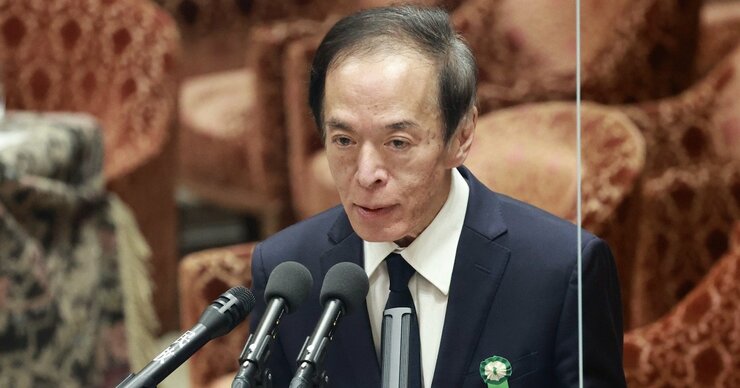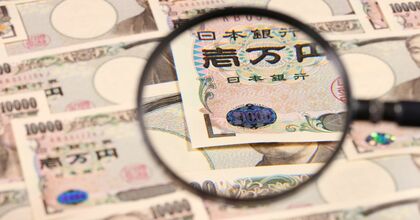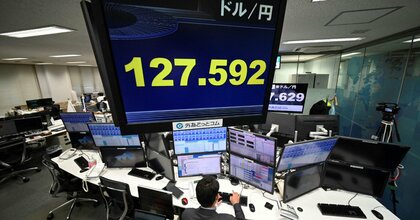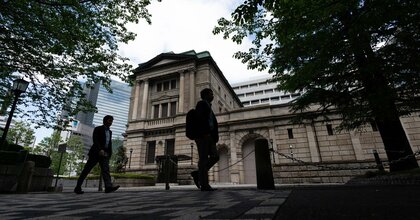Originally published in Japanese on Feb. 16, 2023
Intellectual bulwark
Ueda's name became familiar when the Japanese economy was grappling with the aftereffects of the financial crisis that followed the collapse of the bubble economy. He is well known to financial professionals as a leading macroeconomist and an expert who was involved in steering monetary policy as a first-generation member of the Bank of Japan's post-reform Policy Board.
He is well suited to take the helm of the BOJ, which faces the new and difficult task of normalizing its unconventional monetary easing.
Ueda served as a member of the Bank of Japan's Policy Board from 1998 to 2005, and I was his dedicated staff member from the winter of 2000 to the early summer of 2003. At the time, I was left with the impression that he was the theoretical underpinning of the world's first "quantitative easing" program in March 2001, introduced by the BOJ in March 2001.
Quantitative easing at that time relied heavily on short-term money supply instruments, such as treasury bill purchases. This differed from the quantitative easing of the world's major central banks after the collapse of Lehman Brothers, which relied on purchases of long-term government bonds, and from the unconventional easing of the BOJ under Governor Haruhiko Kuroda.
The central bank expected criticism that the BOJ's exchange with financial institutions of short-term assets and reserves held by banks would amount to little more than a meaningless exchange of "close substitute goods" in economic parlance.
Ueda, in contrast, argued both within the BOJ and in outside speeches for the significance of quantitative easing as follows:
First, even if the policy variable shifts from interest rates to the supply of funds through quantitative easing, the ample supply of funds should keep interest rates in the short-term money market near zero. In this sense, the policy is consistent with a framework in which interest rates are variable.
Ueda explained this with the expression that interest rates and the money supply are "two sides of the same coin."
Incidentally, in the fall of 2016, Governor Kuroda moved in the opposite direction, shifting the policy target from the money supply to interest rates with the introduction of yield-curve control. The idea that the amount of government bond purchases will guide long-term interest rates to the target level can also be understood within the framework of this two-sided coin.
Second, providing ample funds through quantitative easing has important implications in terms of financial stability.
Although the worst of Japan's financial crisis had passed by the spring of 2001, the financial system was still unstable. There were concerns about the credit risk at major businesses and financial institutions toward every end of the quarter, and many regional banks had not even begun to dispose of their non-performing loans.
In terms of financial stability, the impact may differ whether the BOJ guides short-term money market interest rates near zero or supplies ample funds to financial markets. In the former case, some financial institutions would not be able to raise funds in the short-term money market, but in the latter case, the BOJ can supply funds directly to banks, thus reducing the possibility of financial system instability.
It was clear that Ueda viewed the condition of the financial system as similarly important as trends in the real economy, and he tried to manage monetary policy while bearing in mind the interaction between the two.
The importance of this perspective was later confirmed in the U.S. and Europe through the collapse of Lehman Brothers and the European debt crisis.
Third, Ueda provided the theoretical underpinnings for the "policy commitment" introduced by the BOJ along with quantitative easing, which was intended to lower market interest rates in the medium term.
The idea was that based on the "expectations theory," which holds that market interest rates are affected by the future path of the policy rate, the BOJ's explicit commitment to maintain monetary easing until it achieves its policy target of higher consumer prices would encourage market interest rates to decline over the period during which the target is expected to be achieved.
Such a policy was suggested as a theoretical possibility around 2000, mainly by economists at the Federal Reserve Board in the U.S., but the BOJ was the first central bank to actually implement it.
In this sense, Ueda contributed significantly to gaining an understanding of domestic and international financial markets.
After the collapse of Lehman Brothers, the "policy commitment," combined with softer conditions such as price forecasts and the addition of objectives like stable inflation expectations, evolved into "forward guidance" and became a normal policy tool for major central banks like those in Japan, the U.S., and Europe.
Flexible approach
The governor of the BOJ is appointed by the Cabinet and confirmed by the Diet in accordance with Article 23 of the Bank of Japan Law. It is difficult for an outsider like myself to explain why the Kishida administration decided to appoint Ueda.
However, one thing that can be said about Ueda is that he does not rely on a specific theoretical framework to understand economic and price trends. He can flexibly apply a variety of theoretical tools depending on the situation.
This is likely based on his understanding that the economy and prices are affected by extremely complex factors, and it would be difficult to conduct monetary policy according to a single model.
The nature of monetary policy under Governor Ueda should be in accordance with what he said during his Diet confirmation hearings, but there are a few points to keep in mind when considering policy under a new governor.
First, the next governor is not in a position where he is entrusted with a specific mission, as was the case when Kuroda became governor.
When Kuroda took office in the spring of 2013, the most important issue was ending the deflationary mindset. That was the most trumpeted part of the Abenomics program, and in some respects, it was a rational policy objective: The Japanese economy had been mired in a state of general malaise since the collapse of Lehman Brothers and the 2011 earthquake and tsunami.
However, thanks in part to the economic recovery after the COVID-19 pandemic, companies have made dramatic advances in digitization and climate change measures, and households have become less pessimistic as employment has grown.
What is important for monetary policy is that Japan is exiting the deflationary mindset in the sense that households and businesses have reaffirmed that prices and wages can rise depending on circumstances. This is significant because it also allows for real interest rate reductions in a low-interest rate environment.
Of course, the Japanese economy has not escaped its long-term low-growth trend, and structural elements like the declining and aging population are unchanged. But at least now, in "peacetime," the new governor will not need to use strong prescriptions to accomplish a specific mission.
Therefore, if prices and wages rise autonomously and sustainably, the new governor can judge that the current forward guidance of quantitative and qualitative monetary easing has been satisfied and move to change policy, including an increase in the policy rate.
In this regard, as governor, Ueda is expected not to adhere to a particular theoretical framework but to emphasize economic indicators.
The key to moving forward with these policy changes is to encourage a smooth transition of economic behavior from that which has been entrenched under the prolonged low-interest rate environment to one in which interest rates also rise under certain economic conditions.
As the BOJ indicated in its Financial System Report, the majority of home loans are floating-rate loans, and some regional financial institutions have large holdings of very long-term government bonds. In addition, some companies and investment projects have survived because of low-interest rates. An increase in interest rates would naturally put these under strain, meaning such a move requires careful consideration.
It is, therefore, important to focus on the interactive relationship between the financial system and the real economy, as Ueda does.
Moving cautiously
In contrast, if price and wage growth falls short of the targets set by forward guidance, the new governor should continue monetary easing. This path would present two options: continue the current quantitative and qualitative monetary easing unchanged or continue monetary easing under a different framework.
With various side effects becoming more visible, particularly the deterioration of the market function of government bonds, financial markets are increasing of the opinion that direct control of long-term interest rates, such as yield-curve control, should end.
If there is to be a smooth transition to "normal monetary easing" while reviewing the distance with the government bond market, the focus will be on how to guide market interest rates in the medium term.
In that case, one option would be to make more active use of the medium- to long-term operations for fund provisions that have already been introduced.
Meanwhile, it will be interesting to see how the BOJ, under the new Governor Ueda, revamps its "policy commitment." Under the new economic and market conditions, it could change the policy to influence market expectations by explicitly conditioning future policy operations on specific economic indicators rather than directly intervening JGB market.
However, there has been no change in the structure of the Japanese economy itself, which is heavily influenced by trends in overseas economies and financial systems.
In this sense, it is necessary to recall that even though the BOJ lifted the first round of quantitative easing and began "normalizing" monetary policy in 2006, the collapse of the housing bubble in the U.S. and the international financial crisis triggered by the collapse of Lehman Brothers led the central bank to reintroduce monetary easing.
When Ueda was a member of the BOJ Policy Board, he argued against lifting the zero-interest rate policy, saying that the impact of the IT bubble in the U.S. should be closely watched.
As then, the new leadership in the BOJ will need to fully assess the trends in overseas economies, the post-zero-COVID recovery in China, and monetary tightening in the U.S. and Europe, and their impact on financial stability, and how they will affect the domestic economy and prices.
(Originally written in Japanese by Tetsuya Inoue, translated and edited by Connor Cislo)











